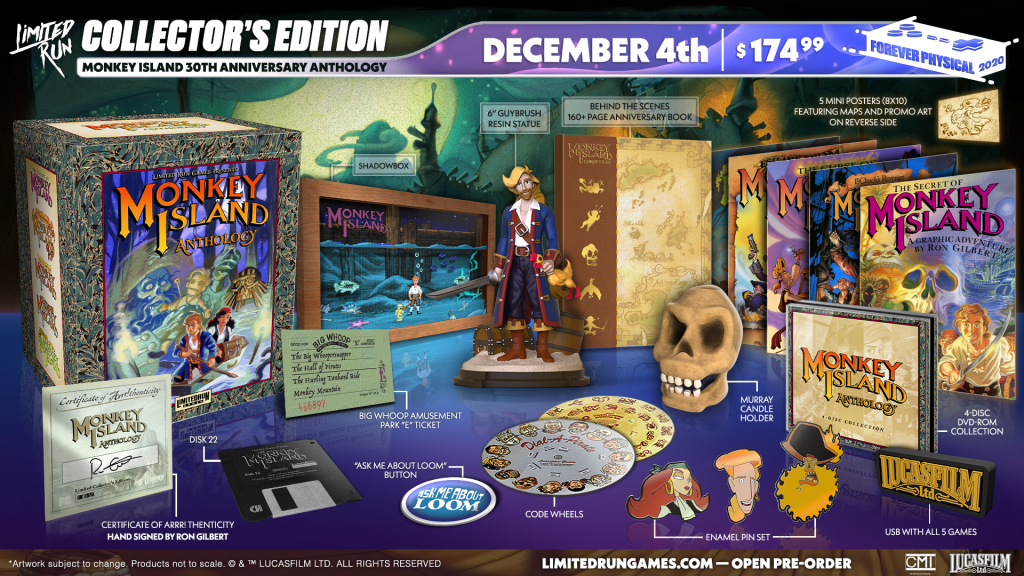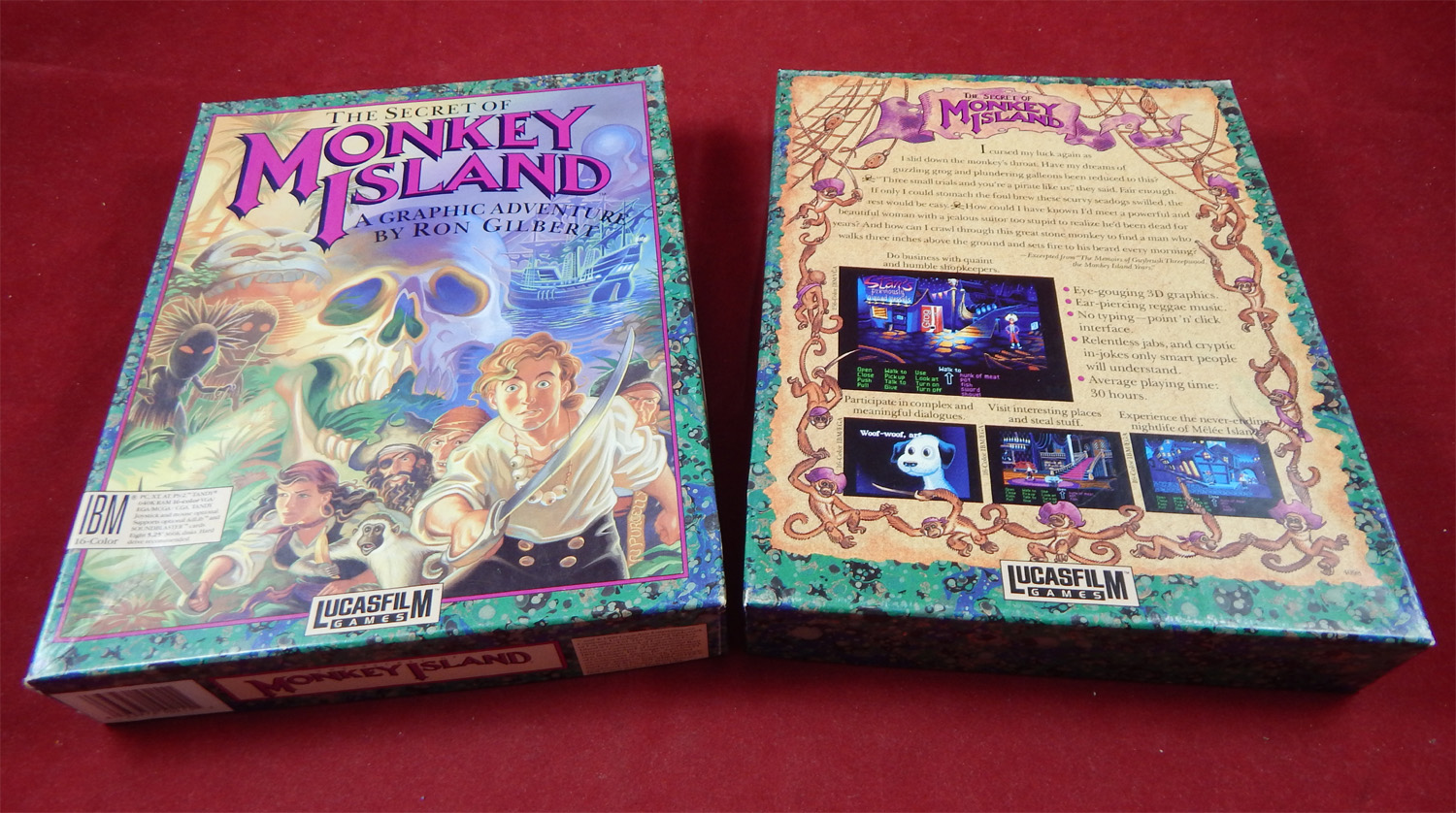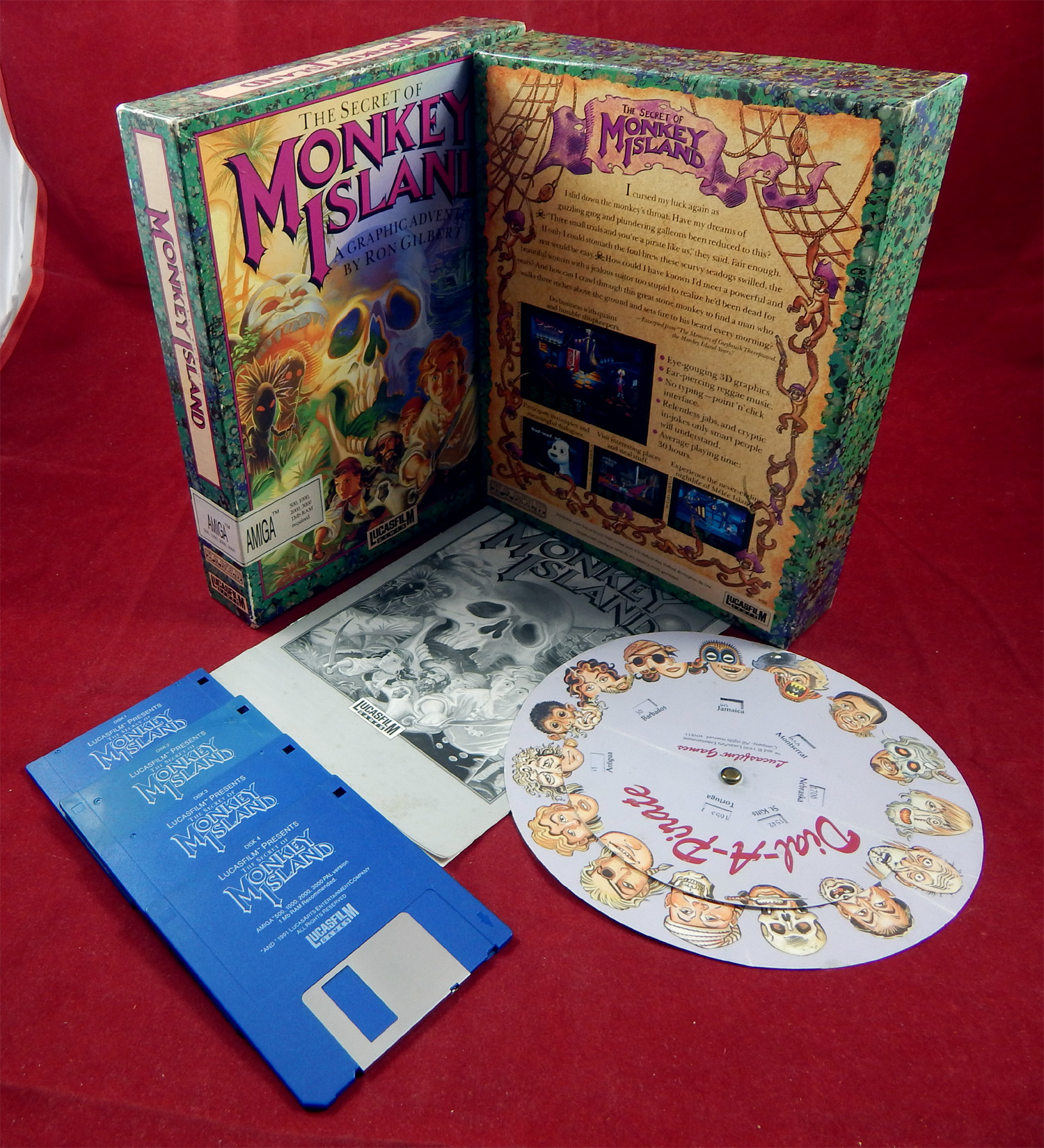


Prior to this runthrough I had only played the VGA version of Monkey Island and I thought the EGA version was… not ugly as such, but certainly very basic, and only something you’d put up with if you had an ancient computer that couldn’t do VGA 256 colours are clearly better than 16 colours, after all. Let’s start with what’s become the meat and potatoes of these retrospectives: the art and the interface. You can’t make a game like Monkey Island until you can make a game like Monkey Island you need artists and animators who have built up the skills needed to make the visual gags work, you need somebody to look at the conversation system in Last Crusade and think “Hang on, we could do a lot more with this…”, and you need players to be familiar enough with the general concept of point and click adventure games for Monkey Island ’s meta humour to land properly. All of the previous LucasArts adventure games have tried to be funny but mostly misfired 1 Monkey Island is the first one to go in this heavily on the comedy and genuinely succeed - there’s no deliberate anachronism that Monkey Island won’t insert in the name of a good joke, no fourth wall it won’t break in order to lampoon both itself and the wider adventure game genre - and now that I’ve actually played through the previous attempts I have to say I think this would not have been possible without them. It also drastically mis-sells the game’s tone, however, and I can easily imagine this hypothetical first-time purchaser being outraged to discover that this is not a pirate-themed adventure game, but a pirate-themed comedy adventure game, and which has a very definite opinion on which of the three elements is most important (hint: it’s not the pirates or the adventure). It’s even one of the most technically accurate pieces of box art ever produced, since everything that is on the box is in the game in one form or another.

THE SECRET OF MONKEY ISLAND BOXART MOVIE
The box art on its own is a classic, an excellent fusion of the Drew Struzan movie poster style with Steve Purcell’s art, and which promises a pirate-themed adventure with swordfighting, treasure-hunting, romance, undead ghost pirates, eyeball necklaces and gigantic stone monkey heads. The Secret Of Monkey Island needs little introduction today, but I do chuckle when picturing somebody picking up the box for the first time back in 1990. Its sole redeeming feature is that it includes the VGA version as its obligatory Classic Mode, and that’s the one you should play if you buy it.) Then there’s the 2009 Special Edition, which I regard as nothing short of a complete butcher’s job modernising the interface and making it fully voiced means it loses a lot of the visual humour and text-based joke timing that defined Monkey Island, while the new art is not particularly attractive and is also locked to the same animation frames as the old art, which only serves to draw attention to how jerky and stilted it is. This version is acceptable and is the one I previously played through, although I think the more I do this the more I’m becoming an adventure game purist who thinks they must be enjoyed in the Original Format Only to avoid losing anything in translation the VGA art for Monkey Island is more detailed but also flatter and less punchy, and I think I like the EGA art better in 90% of cases.

A couple of years later it received a VGA rerelease just like Lucasarts’ other titles. Monkey Island’s original release was the EGA version, which I have been playing for this series. It’s an adjunct to my Bad Game Theory, where you need to play the occasional bad game to give you the right context for what a good one looks like here I needed a better appreciation of the games that had come before it to fully understand why Monkey Island was such a groundbreaking tour de force of art, humour and puzzle design. Despite having played through The Secret Of Monkey Island six or seven times over the past three decades, and despite already thinking of it as a stone cold classic, experiencing the trials and travails of LucasArts prior to its release gave me a whole new appreciation of why it’s a classic. So I guess I got what I wanted out of this project.


 0 kommentar(er)
0 kommentar(er)
